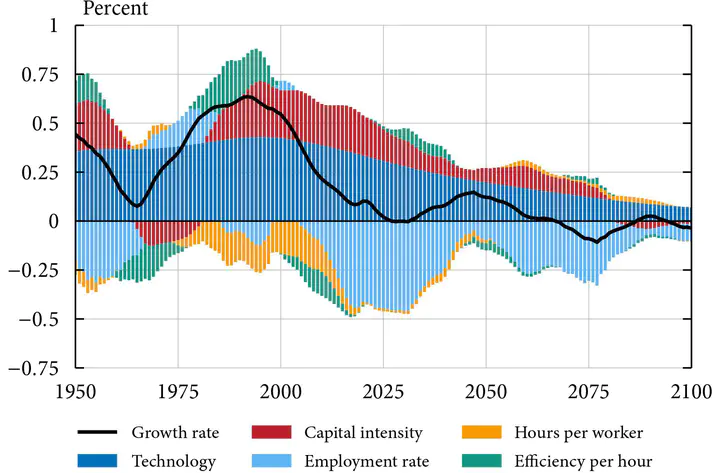Endogenous Technological Change Along the Demographic Transition
 Growth impact of the demographic transition
Growth impact of the demographic transitionAbstract
Does population ageing hurt output per capita in the advanced economies? Standard calibrations of life-cycle models with exogenous growth that consider two fundamental and opposing forces, capital deepening versus a declining employment rate, predict yes. Using a quantitative overlapping generations model with realistic demographics and R&D-driven endogenous growth, this paper challenges the standard prediction through a third possibility: that current demographic trends boost R&D investment and thus generate technological change. Calibrated to the United States, the model indicates that the demographic transition between 1950 and 2100 increases output per capita by 0.41 percent per year until 2000 and by 0.18 percent per year overall, thereby explaining 10 to 20 percent of observed US growth. The key mechanism is the endogeneity of technological change, whose growth contribution triples that of capital deepening, and removing this channel eliminates the positive impact.